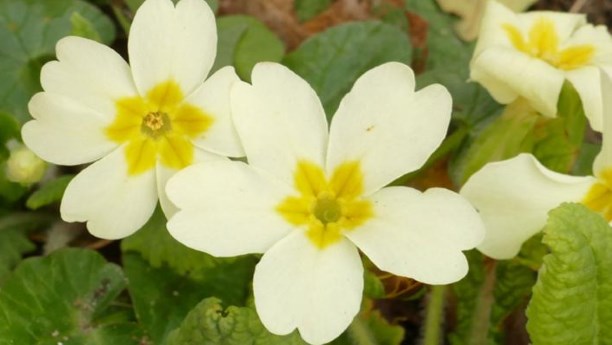Flowers: Gene responsible for short styles discovered
Geneticists from Potsdam have cracked a century-old puzzle: They have discovered a gene in primroses that controls the length of its female reproductive organs.

A single gene regulates the length of female reproductive organs, thus helping avoid self-fertilisation. This discovery means that plant geneticists working with Michael Lenhard at the Institute for Biochemistry and Biology at the University of Potsdam have solved a centuries-old puzzle. Together with colleagues from England, Switzerland and Japan, the researchers wrote up their findings in the scientific journal eLife. The gene produces an enzyme that subtly alters the flower's hormonal balance.
Flower's reproductive organs separate
Female and male reproductive organs are found within the same flower of many plants. In many such cases, plants have evolved adaptations to prevent self-fertilisation. Thus they can avoid the negative effects of inbreeding. Instead, cross-pollination facilitated by insects is encouraged. "One of the most fascinating adaptations in the evolution of plants is heterostyly, i.e. different types of styles", says Michael Lenhard, "this means that female and male reproductive organs are separate from each other".
The flower's female reproductive organs are located in the pistil: Together, the styles and the stigma form the vertically protruding part responsible for pollination. The ovary and its ovules are located below them. The male reproductive organs form the stamens with their pollen. Individuals of species with differing style lengths can be divided into two classes. One form has a long female style with short male stamens, whereas in the other the lengths are reversed.
Even Darwin was fascinated
The importance of heterostyly was discovered by none other than Charles Darwin. It fascinated the father of evolutionary theory so much that he wrote extensively on the topic. Yet well over a century later the genetic and molecular basis for the phenomenon of heterostyly remained unknown.
The primrose variety primula veris supplied the researchers from Potsdam with the key to solving the mystery of the flower. The primrose has two forms, with long and short styles, respectively. The research team at the University of Potsdam compared all of the active genes in short-styled flowers with those in long-styled ones to identify which were responsible. That comparison led the researchers onto the trail of a gene present only in the short-styled form, where it is specifically active in the style. The gene is missing in the long-styled form altogether.
Enzyme releases growth hormone
The gene contains codes for an enzyme that releases a plant growth hormone. The hormone is a brassinosteroid that primarily promotes cell elongation. The difference in style lengths is a result of differences in cell elongation. To demonstrate that the candidate gene was indeed responsible for the difference in style lengths, the scientists experimented on a wide variety of primroses and closely related species that were unique in that they contained flowers with both long styles and long stamens.
As predicted, in all such cases the cryptically named gene CYP734A50 was either missing entirely, mutated and inactive, or could not be read. As predicted, compared with the longer styles, the short ones contained only modest quantities of the plant growth hormones. When the researchers deliberately added a few drops of the plant hormone to the flowers with short styles, the style length increased to that of the long-styled ones.
Possible use in hybrid breeding
The findings of the geneticists from Potsdam and Gatersleben are not only important for reconstructing the evolution of heterostyly. Their results may also find application in plant breeding, for example, with so-called hybrids. To increase crop yields, modern agriculture uses hybrid seeds that have to be created again and again by crossing genetically differing parents. If it were possible, as in the case of the primrose, to engineer two forms of agricultural crops that would breed with each other but not self-pollinate, it would greatly facilitate the production of hybrid seeds and as a result, be of direct benefit to farming.


